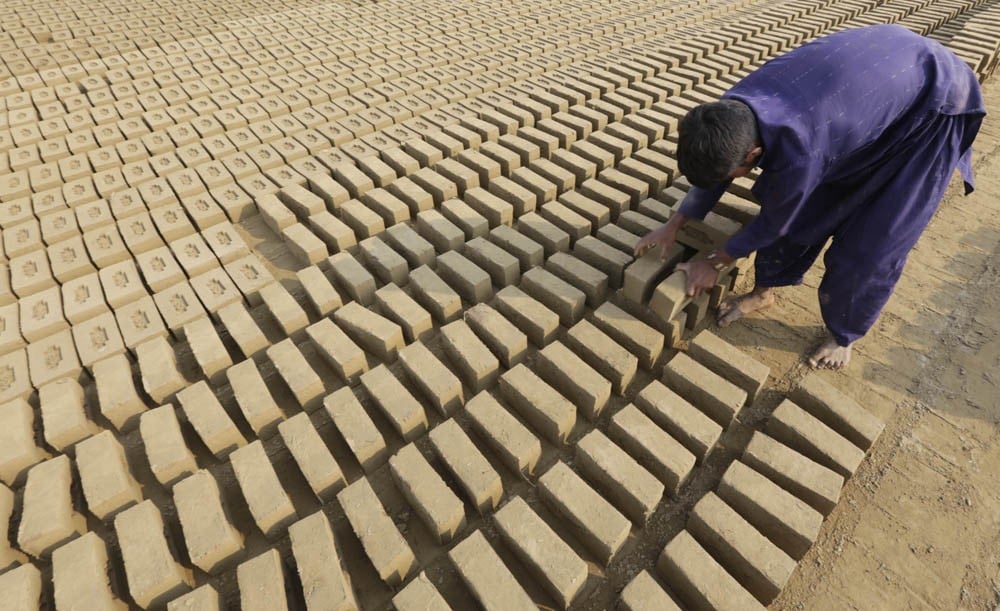
It is just another day when he returns home empty-handed

In the sweltering heat, Mohammad Ismail stands at Lahore’s Akbar Chowk near Jinnah Hospital with several other labourers waiting to get picked up for construction work. Among other spots in the city where labourers gather and wait are Bhatta Chowk and Ghazi Road. Even on an average day, when the weather is clear and there are no strikes or incidents of terrorism in the city, the chances of getting work are not very high.
"I often have to wait for long hours here. The amount that I get for a day’s work varies from Rs800 to Rs1000. In that much money, I have to manage meals for the day and my travel expenses. Supposing I come on a bike, I have to get fuel. At the end of the day, I’m left with about Rs500 to Rs800 to take home. It is a struggle to make ends meet. This isn’t fixed income either. Sometimes, I have to wait for days to get work," he says.
Mohammad Ismail is 35 years old, is married and has a son. His wife works as a maid, and together they make around Rs15,000 on average during a month. His son, Abbas, goes to a school where the monthly fee is Rs1000 and the pick and drop service charges Rs2000 per month. He hopes better education will help Abbas get a good job.
"Once, I fell from the roof of an under-construction building and had a foot injury. For the next two months, I was out of work. I had to ask my brother for help to meet the medical expenses. The supervisor simply told me to go home and hired another labourer to do my job. There is no shortage of labourers, you see," he adds.
Ismail’s story is not a novel occurrence. Even in today’s time and despite repeated promises of economic and social uplift of the downtrodden, efforts on the ground do not seem enough to mitigate their woes.
Ishrat Bibi’s case is another example. She lost one half of her hand while she was working at a snacks factory in Sahiwal. "The owners of the factory did help me get medical treatment but the operation was unsuccessful. A nerve was damaged because of which I can no longer work with my right hand," she tells TNS. Her daughter, Saima, who also worked at the same factory, lost half of a finger. Saima kept on working at the factory till the time she got married.
"This is an occupational hazard. I had to keep on working because my family was poor and we needed the money. I was scared that no one would want to marry me because I had lost a finger," says Saima. She highlights the need to focus on training workers instead of just leaving them to figure out how to operate machinery.
"I was never trained to operate these machines; neither was my mother. Both of us had to pay heavily for this," she states.
With a monthly household income of Rs12,000 and both Saima and her mother working full-time at the factory and earning the same amount, the savings were next to nothing. Her father had already abandoned them when she was just a baby, leaving the women to fend for themselves. Neither she nor her mother knows that the minimum wage in Punjab is Rs13,000.
This, however, does not mean that giving the minimum wage to workers will ensure a comfortable lifestyle. Each year, it is revised upwards almost as a matter of routine to keep up with the inflation statistic.
The inflation statistic, the consumer price index (CPI), has been the subject of an intense debate regarding its accuracy and composition. When the statistic itself has been criticised for its inability to depict the true picture of Pakistan’s economy, arguably all policies derived from the information that it provides will fail to achieve the desired impact.
Read also: “Labour brief”
To add to this, the fact that such measures can prove counterproductive and increase inflationary pressure by way of increasing money in the market should be looked at carefully; ideally, alternatives designed to achieve economic uplift should be chalked out instead. But these are things that will take effect once the minimum wage rate is implemented.
The private sector and in particular, the informal private sector has been difficult to regulate. There is also the feeling that a lax attitude has been adopted towards enforcing those laws that will most likely harm the interests of industrialists and land-owners.
Mohammad Yaar, a 55 year-old from Khanewal moved to Lahore two years ago for better opportunities. Back home, he was a farm worker struggling to earn a livelihood for his wife and four children. "I was under a lot of debt when my wife had to get her appendix operated. That’s the thing -- when you work day and night on a farm in blistering heat and you need money for medical or any unforeseen difficulties, you have no one to turn to -- least of all your landlord," he laments.
Today he does two jobs -- he is a smith and a watchman, and still earns a meagre Rs12,000. His wife will soon be working as a maid at a house in a posh residential area in Lahore. Things will improve, he hopes. He does not know what the minimum wage rate in Punjab is or the fact that May 1 is World Labour Day. He just sees it as another day when he will return empty-handed to his family. There was once a time when as a farm worker in Khanewal, his annual household income stood at Rs20,000.
The bourgeoning disconnect between the ruling elite and the masses that vote for them is still very palpable.